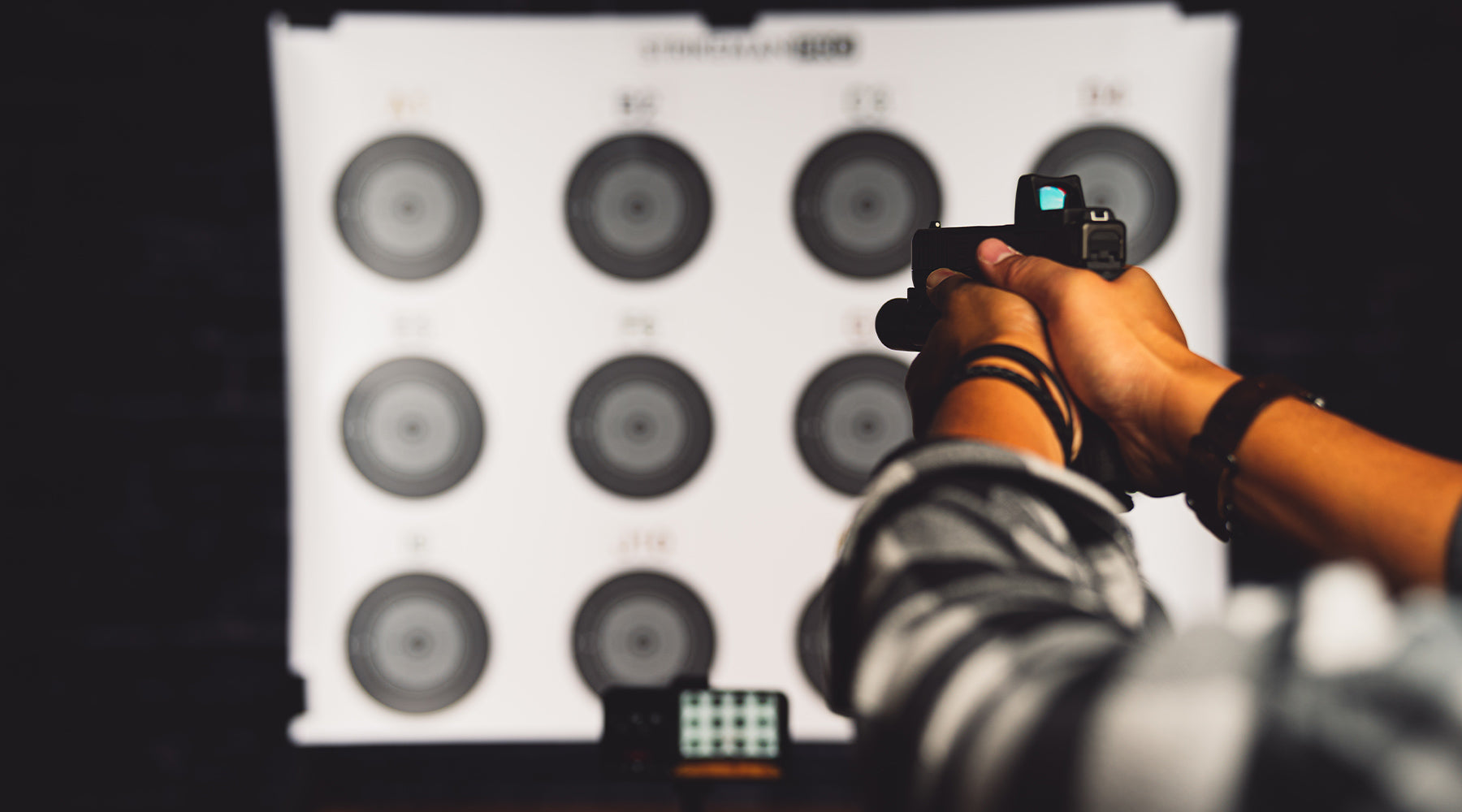Dry-fire laser training can be an effective technique for improving your shooting performance. Unlike regular dry-firing, where you cannot tell whether your shots are accurate, dry-fire laser systems show you exactly where you are aiming and where your shot would land in a real-life situation.
A majority of dry-fire laser systems are paired with a camera or app to enable you to collect data during your practice sessions. They also offer a variety of training plans to help you fine-tune different shooting skills, such as target acquisition, sight alignments, trigger control, various drills, etc. They are easy to set up and use.
Here are tips and techniques for dry-fire laser training to improve shooting proficiency.
Practice Regularly
Like any other skill, mastering shooting requires regular and consistent practice. Set aside dedicated time for your practice sessions. Aim for at least three 1-hour sessions each week. If you can manage more or longer practice sessions, the better.
You can start with shorter sessions, say 10-15 minutes, and build up over time. Establish a schedule that works for you to ensure you show up for each session.
Set Up a Dedicated Space for Practice
Set up a designated space for your practice free from distractions. The place should be well-ventilated, with adequate lighting, and away from flammable materials. Clear the space of any obstacles or objects that may interfere with your practice. Also, remove any hazardous items, such as breakable items or furniture.
Proper lighting is crucial as it ensures you can clearly see your sights, laser dot, and training target, resulting in accurate sight alignment and target acquisition. If the space is not well-lit, consider setting up additional lighting.
Also, consider placing a designated shooting mat in the space. It defines the shooting area and provides cushioning and comfort on your feet during practice sessions. It also helps to protect the floor from impact as you change your body position for different drills.
Come Up With a Training Plan
Start by assessing your current skill level and training needs. Determine your strengths and weaknesses and identify specific skills you want to work on. If you are a beginner, your main focus should be developing fundamental shooting skills such as stance, grip, trigger control, breathing control, and sight alignment.
If you are an intermediate-level shooter, focus on specific skills or techniques. For example, trigger control, target transitions, reloads, sight alignments, and body dynamics. Intermediate and advanced shooters can also focus on specific drills.
Once you have identified your areas of focus, create a training plan. Research various dry-fire training resources to come up with a plan. Your plan can focus on starting on basic skills and progressing to more complex drills or gradually increasing the level of difficulty.
Establish the end goal and set measurable targets to track your progress. For example, your goal can be completing a certain drill in a given timeframe, improving your accuracy percentage, or decreasing split times. It also helps to keep a log to help you track your progress and adjust your plan accordingly.
Incorporate Different Techniques Into Your Dry-Fire Practice
There are a wide variety of techniques and drills that you can practice through dry-fire laser fire training. For example, simulating different shooting scenarios, practicing different shooting positions such as standing, kneeling, or shooting over a cover, incorporating different movements such as lateral movements, using props, etc.
Observe Safety Guidelines
When dry-firing, it is paramount that you observe the recommended safety measures. Here are some safety guidelines to keep in mind:
- Always treat the firearm as if it is loaded with live ammunition. This reinforces the safe handling of firearms when using live ammunition.
- Ensure that the firearm is not loaded. Before beginning a training session, double-check the firearm to ensure it is not loaded with live ammunition. If it is loaded, remove the ammunition and store it safely.
- Only practice in the designated practice space.
- Only point the firearm in the direction where it is safe to fire. This eliminates the risk of accidental discharge that may result in injury or damage.
- Wear eye protection. Although not mandatory, eye protection helps shield your eyes from potential debris or accidental laser reflections.
- Observe finger discipline. Keep fingers off of the trigger unless you are ready to fire.
- Avoid distractions during your practice. If you are using your home for practice, inform your roommates or family members about your training session and that they should stay away from the designated practice area.
- Adhere to the safety guidelines provided by the laser system manufacturer.
- Store your firearm and dry-fire laser system securely when not in use. It is advisable to lock them in a safe, out of reach of children and other individuals.
Combine With Live Fire Practice
Although dry-fire laser training can significantly improve your shooting skills, it is not enough. You must combine it with live fire practice to truly translate the skills you are learning.
You also get to practice aspects such as recoil management, which are not incorporated in dry-fire laser training. Combining dry and live fire practice ensures you are well-equipped for real-life situations. Only practice live firing at a shooting range.
Conclusion
You need to be strategic to improve your shooting skills with dry-fire practice. Establish your training needs and come up with a practice plan. Consistency is key. However, you need to progressively improve on the technique you are working on.
Therefore, develop measures for tracking progress and adjust your plan as needed. It is also crucial to prioritize safety and combine dry-fire training with live fire training to ensure your learning skills translate well.








